How I make compost
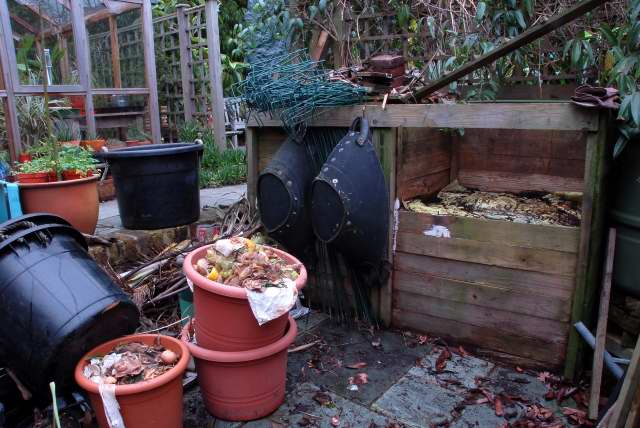
Compost bins ready to be turned over and out
At about this time of year (20th January - 14:50hrs..), it is time to begin to make compost again. The fill side of the bins will take no more. Buckets of semi rotten kitchen waste await composting. Trees, shrubs and grasses need to be pruned, cut back or generally tidied.
The first step is to remove the mature compost. Over the last year the mature compost will have shrunk to about two thirds of its original volume.
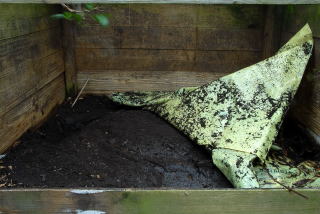
Mature compost
- The first step is to remove the mature compost. Over the last year the mature compost will have shrunk to about two thirds of its original volume.
- Removing the plastic sheeting reveals the dark crumbly mass of mature compost.
.
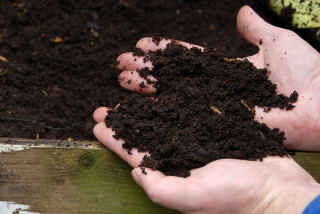
Crumbly compost
- The plastic sheeting has prevented the maturing compost from getting too wet or too dry. It also encourages invertebrate life to the surface. This creates a very fine crumbly compost. The top layer of the compost tends to be generally free of weed seeds. As a result, the top few inches are used to top dress container grown plants. It is also used to mulch around the base of tree ferns. Poor light levels around the tree ferns helps to discourage the germination of any seeds that may be present.
.
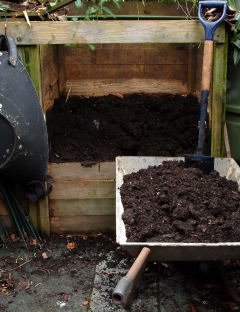
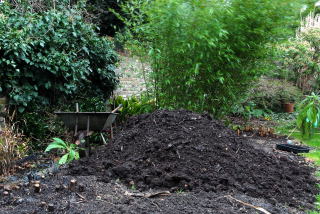
Into the barrow and off to the border.
The mature compost is loaded up into a wheel barrow and transported to an empty border in the garden. The compost is then on hand and ready to be used once plantings begin in the spring.
Turning the compost
This is the only part of the process when you make compost which is mildly unpleasant. At this stage the filling side of the bins will be a mix of semi-rotten tropical foliage, kitchen waste and worms.
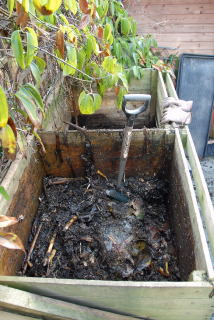
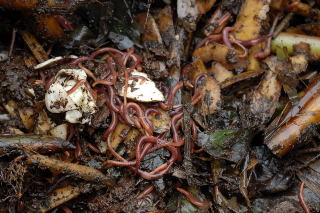
The composting process at work
Once the heap has been fully turned over, the plastic sheeting is replaced. The whole thing is then ignored until the same time next year.
Re-filling the compost bin
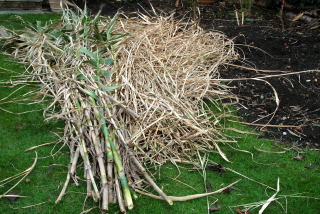
Pre-shredded material
- The next few weekends are then spent cutting back grasses such as Arundo donax and miscanthus. Various trees and shrubs around the garden are also pruned. These shredded grass stems and tree prunings are quite woody relative to compost material derived from tropical plants. Adding them to the compost bin at the beginning of the cycle allows them a full two years to break down. Their coarse nature also ensures good drainage at the base of the heap.
.
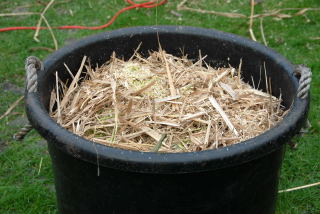
Shredded material
- This material is shredded and mixed together with all the kitchen waste that had accumulated.
.
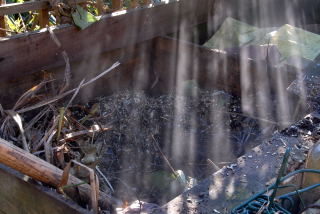
Steam rising from an agitated compost bin
- This initial re-filling will generate a little heat in the compost pile
.
Once all the cutting back and pruning is over, the compost heap is inspected every now and then to check things are not too dry. These early additions used to make compost are generally quite dry. If there has been little rain, then the whole thing is soaked with water using a hose pipe. The amount of material produced initially, almost fills the compost bin as you can vaguely see in the picture above. This is the stuff that will eventually make the relatively weed free compost discussed at the start of this page.
The next few months in the garden are mainly concerned with creating the tropical displays. Additions to the compost heap are mainly in the form of grass clippings (mixed with shredded paper documents) and kitchen waste.
Several months go by...
The end of summer/early autumn provides the next high volume wave of material with which to make compost . The leaves from Abyssinian bananas removed from plants dug up for winter storage are first in. These are soon followed by the leaves of cold hardy bananas that have been removed prior to wrapping.
The first frost then finishes everything else off leaving quite a mess behind.
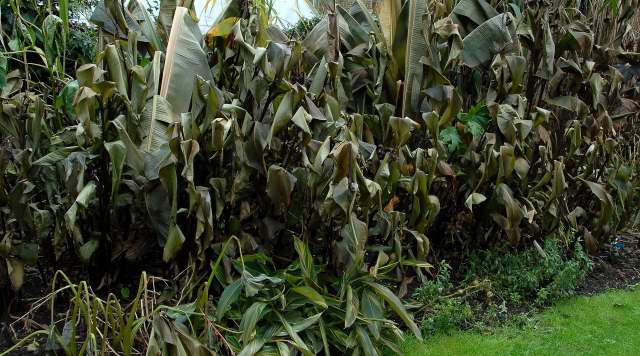
A Frost damaged tropical border
.
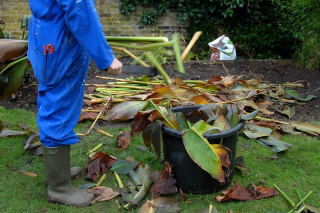
Canna stems are reduced in size
- This of course all needs to be cut down, chopped up and added to the compost bin. The stems are cut down using secateurs. These stems are then chopped into small sections using a machete
- This is done over a large container to avoid having to pick too much up.
- Because of the age we live in I feel compelled to state the obvious fact that a machete can cause serious personal injury, particularly if used when drunk.
.
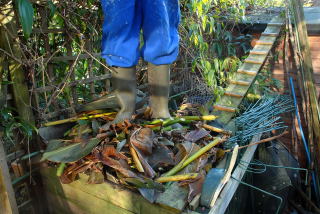
Squashing all the material into the compost bin
- The chopped stems and foliage are then taken to the compost bin and emptied. Some persuasion may be necessary to get it all in.
.
The amount of compostable material produced by the first frosts fills the compost bins to capacity. This stuff is generally quite wet and takes a while to subside, particularly if it has been piled high and trampled down. This particular addition of plant material will spend the shortest time of all in the compost pile. This is then left until we get to the situation described at the top of the page again.
This concludes the bi-annual cycle of how I make compost.

